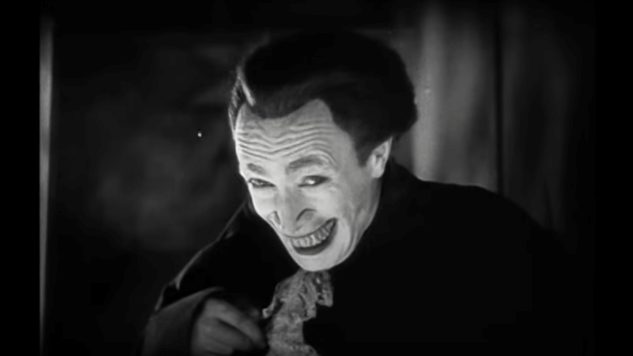
This post is part of Paste’s Century of Terror project, a countdown of the 100 best horror films of the last 100 years, culminating on Halloween. You can see the full list in the master document, which will collect each year’s individual film entry as it is posted.
The Year
It would seem that adaptations of Edgar Allan Poe were having a moment in 1928, as the year yielded not one but two different versions of The Fall of the House of Usher, not to mention a notable Expressionist take on The Telltale Heart. Of those two Usher films, MGM’s U.S. version is a short of only 13 minutes in length, although its Expressionist stylings also make for interesting viewing. More well known is the feature-length Usher from French Impressionist and filmmaking pioneer Jean Epstein, although its languid pacing might make it seem interminable to modern audiences—certainly in comparison to the more florid Usher adaptations that would come along in later years, such as Roger Corman’s famous version starring Vincent Price in 1960.
Regardless, 1928 proves to be the last year with a flourishing of horror titles until the advent of film’s sound era.
1928 Honorable Mentions: The Fall of the House of Usher, A Daughter of Destiny, The Terror, The Telltale Heart
The Film: The Man Who Laughs
Director: Paul Leni
The Man Who Laughs isn’t truly meant to play as a horror film. Although it’s undeniably an Expressionist work from director Paul Leni, adjacent to the same genre that produced Nosferatu or The Cabinet of Dr. Caligari—and indeed, starring Caligari’s own Conrad Veidt—it has more story elements of romantic melodrama and even swashbuckling adventure than it does horror. Except, that is, for its searing, deeply evocative imagery, the product of photography that is so successful it goes above and beyond what it was trying to achieve, creating a horror classic almost by accident.
The film is the story of a man named Gwynplaine, adapted from Victor Hugo’s novel of the same name. As a boy, the young Gwynplaine is orphaned when his dissident father is executed by the English king. Stolen away by a group of child-thieving rogue doctors, his face is grotesquely disfigured into a permanent grin. Escaping his captors, he seeks asylum with a traveling performer, bringing along the baby girl he discovered along the way. Growing to adulthood, he becomes a renowned sideshow act, “the man who laughs,” with his blind “sister” by his side—all the while longing for her love, but consumed by feelings of inadequacy.
That love story may be the focus of the plot, but what the viewer is most likely to take away from the film are singular, disturbing images. A scarred boy, hiding his face, abandoned in the snow. Bodies swinging from the gallows as that little boy runs among them, almost seeming to frolic. A woman frozen to death in a snowbank, still clutching her living baby. An adult Gwynplaine, dressed as an English lord, smiling hideously as his eyes fill with tears before the House of Lords. The dastardly court jester Barkilphedro, whose own grin is equally disturbing and considerably more devious than Gwynplaine’s. Few silent films of the era have such nightmare-inducing still shots.
Those genuinely horrific moments make for an unusual tandem with some of the film’s other unique elements, particularly the character of Duchess Josiana, played by Russian femme fatale Olga Baklanova. Her depiction is extremely Pre-Code, displaying a luridly open attitude toward sex, nudity and flirtatiousness that is shocking to see in a silent film from 1928, running counter to how modern viewers stereotype the era. The Duchess is so voracious, in fact, that in one scene she’s groped and pawed at by the unwashed masses of a county fair … and the character actually enjoys it and encourages them to keep at it. Characters like this one would disappear almost completely from American cinema after the Production Code’s enforcement began in earnest around 1934, not reemerging for decades.
Today, the film’s stature, and fame as the oft-cited “inspiration for The Joker” in DC Comics, can’t help but make one wonder how it might have turned out differently if made only a few years later, in the talkie era at Universal. Would Gwynplaine, despite being the hero of Hugo’s story, somehow have found himself on a pedestal among the Universal Monsters, thanks to his admittedly disturbing face? Would sequels have followed, involving Gwynplaine’s run-ins with Dracula or Frankenstein’s monster? It’s easy to imagine that Gwynplaine could have been stripped of his protagonist status in the sound era, coming off more like the scar-faced villain in William Castle’s 1961 film Mr. Sardonicus, which draws clear inspiration from The Man Who Laughs in everything but its empathetic nature.
Jim Vorel is a Paste staff writer and resident horror guru. You can follow him on Twitter for more film and TV writing.